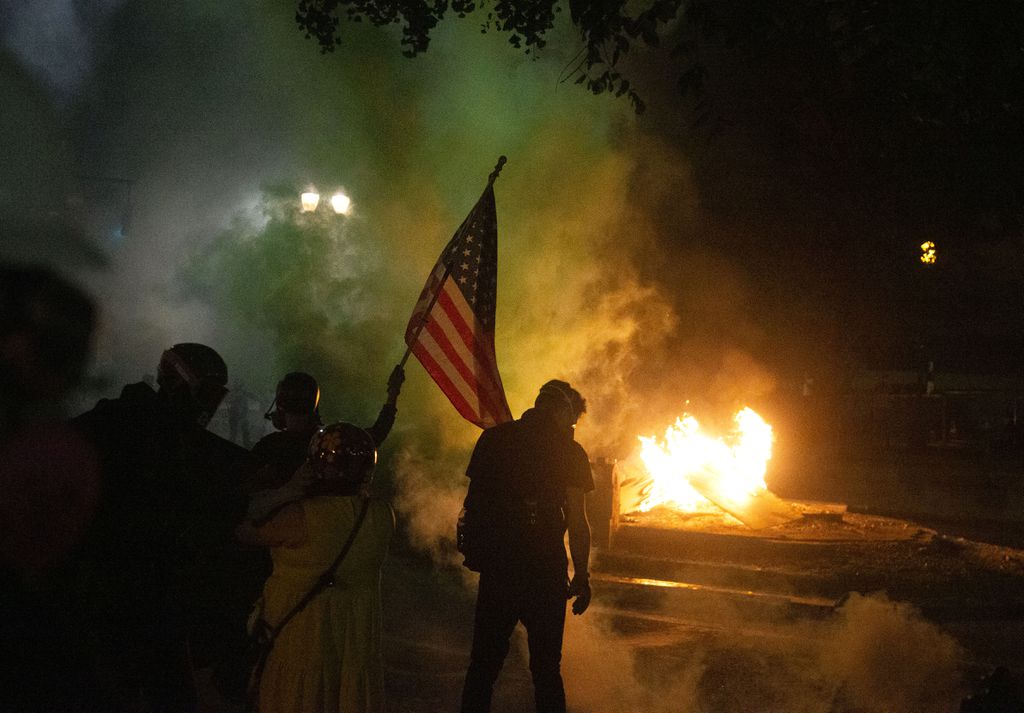
The Oklahoma Eagle Newswire
The test excavation to uncover potential mass graves from the 1921 Tulsa Race Massacre within the Sexton area at Oaklawn Cemetery, where an anomaly was previously discovered, concluded today.
Following eight days of searching, findings indicate no evidence of human remains are present in the excavation area.
“I want to thank the research team for their expertise and work the past eight days as they exhausted all options to reach their conclusive assessment for this particular anomaly found in Oaklawn Cemetery,” Mayor G.T. Bynum said. “This initial test excavation was the first of many efforts to find Tulsa Race Massacre victims and this is just the beginning of our work to bring healing and justice to the families. We remain committed to find out what happened to our fellow Tulsans in 1921.”
After the initial backhoe work over the widest, middle-most swatch of the anomaly, crews started trenching in areas to the south of the initial area – namely trenches A, B and C.
“I entered this process with hope – hope of continuing the work of generations before us to uncover the truth of the Tulsa Race Massacre,” said Public Oversight Committee Chair Brenda Alford. “I still have that hope: I know that we are just at the beginning of a long-term investigation for truth, and that we have a powerful team assembled that will continue that work.”
Main findings at the excavation area include mostly fill debris and artifacts, some of which date back to the 1920s. A bullet, two pairs of shoes and an old, buried road were some of the most notable findings throughout the excavation. Archeologists also found various bottles and other artifacts, which in their opinion, pre-date the 1921 era and could pre-date the cemetery itself.
“At this point, we believe we have fully investigated this anomaly, and unfortunately we have not discovered the evidence of Race Massacre victims we were hoping to find,” said Kary Stackelbeck, State Archeologist with the State of Oklahoma. “But we have learned a great deal about the cemetery itself, and this is information we can carry forward as we investigate future sites.”
Archeologists and members from the Physical Investigation Committee met today with the Public Oversight Committee to discuss the test excavation findings and next steps.
Multiple sites of interest remain and are still candidates for possible mass graves related to the 1921 Tulsa Race Massacre.
In October 2019, archeologists completed Ground Penetration Radar at Oaklawn Cemetery and Newblock Park. Findings strongly indicated anomalies, consistent with common (mass) graves, existed in the Sexton area of Oaklawn Cemetery. This was the subject area of this test excavation.
The archeological team also discovered anomalies within the potter’s field area of Oaklawn Cemetery, where oral history from Clyde Eddy pointed to the potential of mass graves of Race Massacre victims.
Results from Newblock Park indicated no anomalies consistent with mass graves were evident in the park itself, but anomalies were found to the east of Newblock Park in an area called “The Canes.” At The Canes, two anomalies were found that are believed to be consistent with potential graves in the northwestern corner of the survey area. This site remains a candidate for test excavation efforts in the future.
There has also been a large interest in Rolling Oaks Memorial Gardens, formerly known as Booker T. Washington Cemetery, which is privately owned. Interest comes from multiple oral historical accounts from Race Massacre survivors and descendants. The City now has a signed contract with the property owner and work to schedule Ground Penetration Radar is underway, pending delays due to the COVID-19 pandemic.
A formal report from the extensive test excavation and core samples, as well as an analysis of artifacts uncovered, will be presented at a future Public Oversight Committee meeting. The next Public Oversight Committee meeting will focus upon a review of this formal report, and the artifacts uncovered; as well as a discussion and prioritization of locations for further investigation that will guide the City’s efforts going forward.










